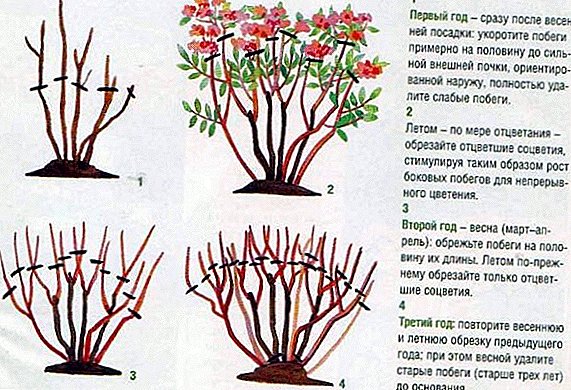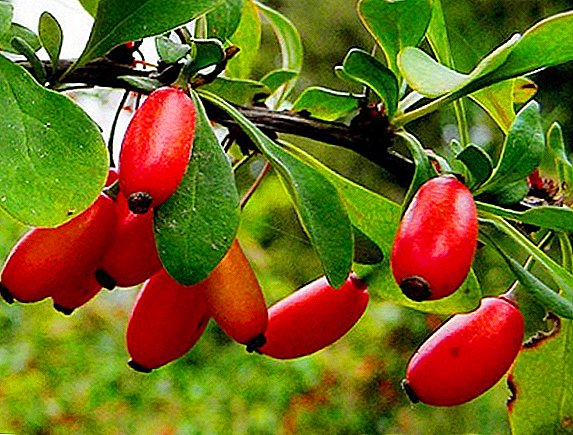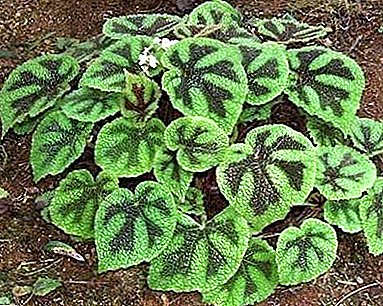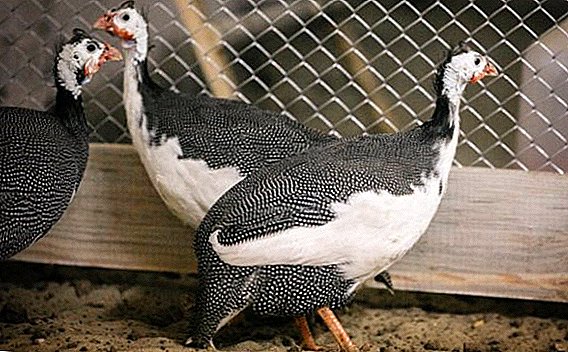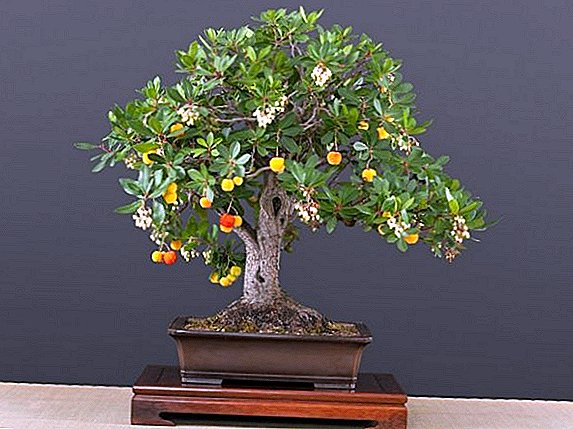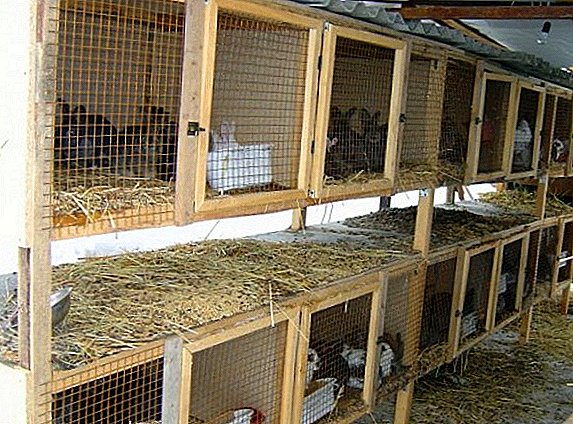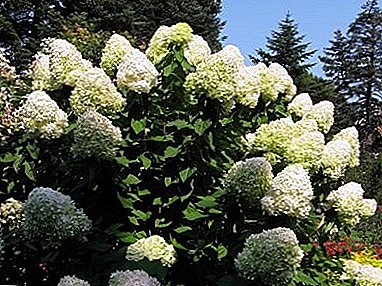
Lush and surprisingly large hydrangea inflorescences - a true decoration of the garden plot. But to get such a lush and beautiful bloom, she needs to ensure the right wintering conditions.
Features wintering different varieties
 Hortensia - shrub in height from one to three meters. Varieties are divided into evergreen and deciduous. In a cold climate zone it is possible to grow only deciduous hydrangeas.
Hortensia - shrub in height from one to three meters. Varieties are divided into evergreen and deciduous. In a cold climate zone it is possible to grow only deciduous hydrangeas.
Ways of organizing wintering depend on the variety that grows in your garden.
- Treelike, Paniculata - tolerate frosts and quickly recover in the spring.
- Large leaf - not resistant to frost. Its flowering occurs on last year's shoots that freeze in winter. Therefore, this variety may never bloom in open ground conditions.
- Himalayan (ground cover) - the most winter-hardy, requiring minimal shelter for the winter.
- Dubolistnaya - low-resistant, it is recommended to plant in those parts of the garden that are most protected from the winds. For the winter requires careful shelter.
- Chereshkovaya - hardy, does not need shelter for the period of frost.
Hydrangea in the fall - preparation for winter
How to prepare hydrangea for the winter? - Preparing for the winter of this charming flower consists of two stages. The first of these is care in the autumn, on the eve of the onset of the cold winter period.
 The preparatory period begins in September. At this time, dramatically reduce watering the plant, gradually stopping it altogether.
The preparatory period begins in September. At this time, dramatically reduce watering the plant, gradually stopping it altogether.
If it rains heavily in the fall, it’s best to cover plant so that excess moisture does not fall on it. You can put a wire frame over the bush for this, which is covered with a film during rain. Shelter must be made in such a way that moisture does not reach the root system. The less water to get the roots, the more successful the winter will be.
Just do not cover the plant tightly so that it does not bloom and does not rot.
In order for new shoots formed in the current vegetative period to ripen and woody, held top dressing hydrangeas. Fertilizer should consist of phosphorus and potassium.
Do not fertilize hydrangea in the autumn with nitrogen fertilizers. This will cause new shoots to grow. freeze in the winter.
With the onset of cold weather, hydrangea will begin to actively reset foliage. With the onset of a strong cooling it is desirable to help her. break free from the remaining foliage.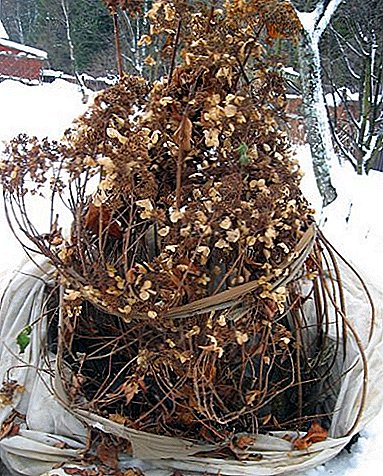
The upper part of the stems in autumn is cut, also remove all buds. After dropping all the foliage and cutting the shoots, they should be tied. A mulch layer is poured under the bush, it should wrap the base of the bush, cover the entire root system.
How to cover the hydrangea for the winter?
Purpose of winter shelter hydrangeas - the preservation of buds on young shoots. Care for the winter is needed hydrangeas, and this is important because it is they who provide flowering. And what's the point of growing a bush where flowers do not form?
Without additional shelter can only tolerate frosts. petiole hydrangea.
Tree hydrangea hiding in the first year after landing. Adult copy is only necessary to pile up, no additional shelter is required. But some of the newly bred large-flowered varieties are better sheltered. This is due to the fact that the flowers they have formed on the shoots of last year, and if they freeze, the plant will not bloom.
For other varieties required extra cover. Covering the hydrangea is required before the onset of frost, as gentle shoots do not tolerate frost below minus 5.
A wooden box is placed next to the bush, shoots are laid on it and the whole structure is covered with spruce branches or a covering material.
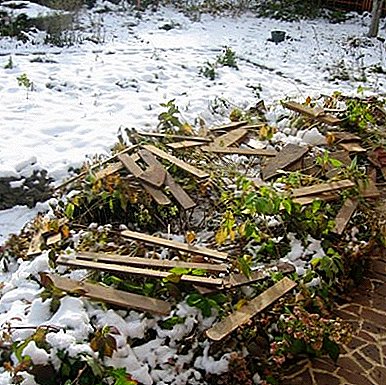 You can also cover the base with a spruce branch, then bend the branches around to the ground and fix. The center is covered with peat or sawdust, and spruce branches are laid on the branches. Above the spruce branches covered with a covering material, fix it on all sides. With this kind of shelter method, hydrangea is able to transfer temperature. to minus forty.
You can also cover the base with a spruce branch, then bend the branches around to the ground and fix. The center is covered with peat or sawdust, and spruce branches are laid on the branches. Above the spruce branches covered with a covering material, fix it on all sides. With this kind of shelter method, hydrangea is able to transfer temperature. to minus forty.
If the bushes are still small, you can completely fill them with earth, and on top with spruce branches. As an option, you can install iron pillars along their perimeter, and tighten the net around. Inside the building poured dry leaves, and covered with a film on top.
High old bushes have poorly bending shoots, therefore the described methods for them unsuitable. They are tied and covered with covering material. Above the bush, crosswise, wire or u-shaped reinforcement are installed. The result is a kind of canopy, which is covered with a film.
If the bushes are planted in a group, you can make a common shelter for them. With this kind of shelter every bush is mulched. Then around the group in a circle are set iron or wooden stakes. The design is wrapped with burlap or covering material. From above everything is covered with a layer of film or roofing material.
As they grow, the frost resistance of the hydrangea bushes increases. So, over time, careful cover can be abandoned, leaving only root mulching.
How to help hydrangeas recover after winter?
Do not rush to remove shelter from hydrangea immediately after the onset of the first warm days. Until all the snow has come down, there is a risk burn the shoots bright spring sun. In addition, the shelter must be removed gradually.
The bush is released from the film as soon as the active melting of the snow begins.
Once warm weather has settled, it's time to check how your pet overwintered. Usually spend it in the middle of Maywhen the threat of spring frost has passed.
To remove cover, select it's a nasty dayso that the bright sun does not burn the shoots. You can even open the bush gradually, taking shelter in the morning and in the late afternoon.
Free the shrub from the mulch layer and burn the soil. If the ground under the bush is too dry, you should plenty of water its warm water. Some citric acid can be added to the water.
After opening, the shrub is pruned, leaving three or four flower buds on each shoot. It is also necessary to remove dry, frozen stalks. For thinning remove shoots, whose age has reached four years.
Do not cut the shoots too short, you can remove all flower buds. Pruning should be carried out before the formation of leaves.
If the bush has suffered during the wintering season, it is more expedient to prune after the first leaves appear. Then you will immediately see which shoots have suffered and need to be completely removed.
After trimming the bush need to feed nitrogen fertilizer. This will give impetus to the growth of shoots and the formation of buds.
Do not feed the hydrangea with ashes, as it will deoxidize the soil and the bush will begin to hurt.
Take care of the hydrangea in winter, having built a proper shelter for her, and she will give you beautiful flowering in the summer.
A photo




